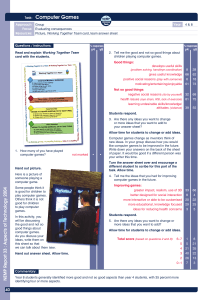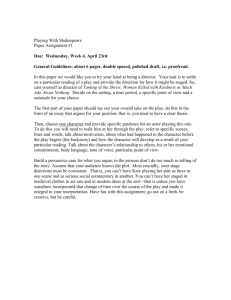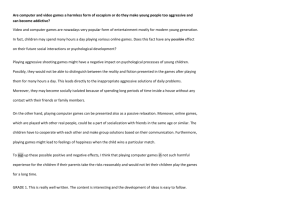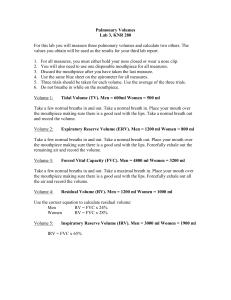Trombone - Band @ RCHK
advertisement
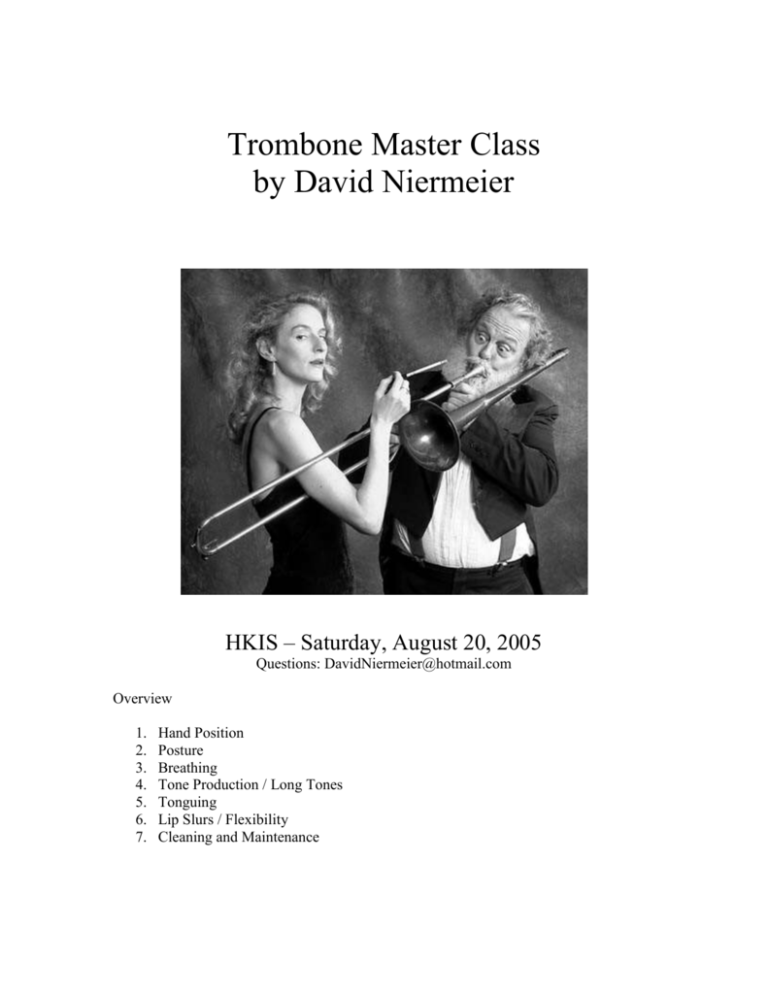
Trombone Master Class by David Niermeier HKIS – Saturday, August 20, 2005 Questions: DavidNiermeier@hotmail.com Overview 1. 2. 3. 4. 5. 6. 7. Hand Position Posture Breathing Tone Production / Long Tones Tonguing Lip Slurs / Flexibility Cleaning and Maintenance 1. Hand position Left Hand -Thumb should bend 90 degrees -Index finger should be straight -other fingers are curved Right Hand -Fingers Should be naturally curved -Rest arms at side to find natural curve -Slide held between 3rd and 4th fingers -Hold between 3rd and 4th knuckles Note: -for getting to 7th position, you can let go with your thumb if you keep a good grip with your fingers. You can also push your shoulder forward for extra reach -Hold the slide like it is a bird. If you hold it too gently, it will fly away, and if you hold it too tight, you will crush it. 2. Posture ●If you are using a cheap plastic chair, sit on the front edge ●If sitting in a chair that doesn’t force you to curve your back forward, you can lean against the back of the chair, as long as you sit in a naturally tall position. Avoid stretching up too high or curving your back forward. Test how it feels to play long tones in these three positions. Bad Posture Good Posture Good Posture 3. Breathing ●Relax your throat: Try tightening your throat and try to play ●Keep you head up: Try tilting your head down and playing Tummy ●Put your hand on your tummy. If you are breathing well, your tummy should move a lot. The bottom of your lungs are bigger than the top. Like filling a balloon ●Fill your lungs completely: Try playing with half empty lungs ●Let the air come out naturally: Try forcing the air out or holding the air back ●Breathing exercises: Always breathe in with a wide open mouth Breathe in and out with a relaxed throat Hold the air back with the aperture of your lips -Breathe in for 2 seconds and out for 2 -Breathe in for 2 seconds and out for 4 -Breathe in for 1 seconds and out for 4 etc…. Your lungs are bigger at the bottom 4. Tone Production / Long Tones (remember to take big breaths) and Mouthpiece buzzing Listen to good examples of Trombone playing Classical Jazz ●Joseph Alessi ●Ian McDougal ●Alain Trudel ●Ralph Saucer ●Bill Watrous ●J.J. Johnson ●Frank Roselino ●Rob McConnell Embouchure Aperture (the space between your lips): ● Important! Where you place your mouthpiece depends on your body. Try placing your lips a bit higher or lower than in the centre and see which works better for you! ●Lips should always be apart: Try playing with lips closed ●High notes have small aperture, Low notes have big aperture: Try playing low notes with lips almost closed. ●Sirens on the mouthpiece only (sound like and ambulance) Curl your lips in for higher sounds and out for lower sounds. ●Sirens on one note on the trombone(to find the centre of the note) ●Test a note on the mouthpiece before playing on the instrument: Try playing a note on the instrument and take the mouthpiece out while still playing. Is it still the same note? ● Try playing a piece. (ie. Mary had a Little Lamb) ●Keep your aperture the same while playing a note Lip Muscles ●Muscles should grip your teeth ●Not too tight! Try using more air and less lip muscle. ●Try to freeze your muscles while playing a note to prevent the sound from changing. ●Keep your lips natural and avoid curling your lips in, pouting them out, or smiling. Jaw ●Keep your teeth apart and still (especially when tonguing) Try different amounts of space between your teeth for different notes. Breath Support ●It is very important to take a big breath before playing, and letting the air come out in a relaxed way: Start Body End ●Try playing a scale with very short notes with lots of silence in between. 5. Tonguing ●Start the air with the sound stopped with your tongue (as if saying the letter “T”) and then quickly let it go. ●Practice tonguing at the exact moment you move the slide to a new note. ●Warm up daily with tonguing exercises ●When you play several notes in a row, keep blowing the air the whole time. 6. Lip Slurs / Flexibility ●Practice blowing a long breath in one position and change the note by making your aperture bigger and smaller. You can make your own patterns, but try 8 eighth notes from F to low Bb first, then use the same pattern in 2nd, 3rd, 4th, 5th, 6th, and 7th position. ●Try to make all the notes have the same sound quality, between high and low notes and between different positions. 7. Cleaning and Maintenance ●Assembling the trombone: Slide Make sure you tighten the slide lock ring seen here to avoid denting the bell denting the slide. It is very delicate. Avoid leaning on the trombone. That can warp the slide. Keep your case on the floor If your case is on the floor it can’t fall anywhere. Mouthpiece Push the mouthpiece in gently and twist. Don’t hit the mouthpiece with the palm of your hand. It might make the mouthpiece stick. ●Putting the trombone away: Make sure the case closes easily. Never force it shut because the slide might get crushed and make it hard to move the slide. ●Tuning slide: Once a month wipe off the tuning slide and put new tuning slide grease on (Yamaha makes a very good tuning slide grease) If it starts to get sticky, put some new tuning slide grease on and use it like sandpaper to loosen up the dirt, then wipe it off and put some new tuning slide grease on. If it still sticks, try doing it again. ●Slide Lubrication: -Never use slide oil. It doesn’t work well. -If you use Superslick, put a little on the end of the inner slide where it is bigger (the last four inches) You should not be able to see it. Then spray some water on the inner slide so the slide glides on the water drops (hydroplane) - Slide-O-Mix: Very good stuff. Read directions on the bottle. ●Slide Lock: Before you hold the trombone with one hand always put the slide lock on. ●Putting the Trombone on the Ground Put the trombone on the ground with the bell and the mouthpiece touching the ground ●Keep the trombone clean: Tools Use a snake and a cleaning rod with a small piece of cloth Acid from Hands Wash your hands before playing, and wipe off the sweat from the places you touched the trombone while playing every day to avoid rusting. Keep your mouth clean Brush your teeth if you can or at least rinse your mouth with water before playing. The sugar in your mouth can Have Fun Playing trombone!
